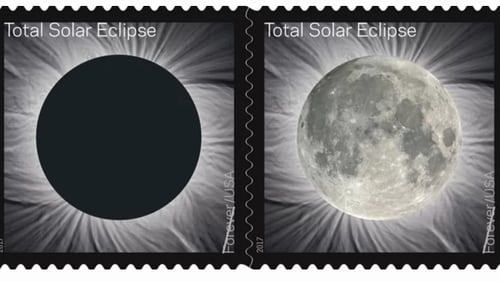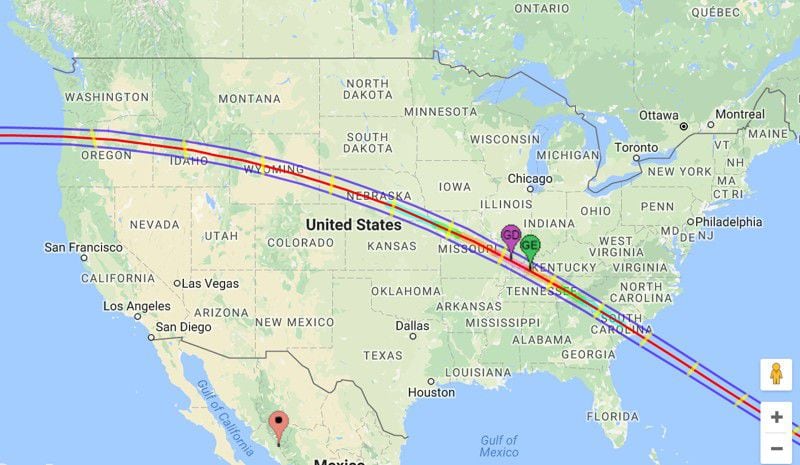This August, the sun, the moon and planet Earth will all align as Americans witness the country's first total solar eclipse in 38 years.
» RELATED: 7 things to know about the rare total solar eclipse crossing the nation this August
To commemorate the celestial spectacle, the U.S. Postal Service announced it would debut a new shape-shifting, heat-reactive Total Eclipse of the Sun Forever stamp on Tuesday, June 20, ahead of the Aug. 21 eclipse.
According to the USPS, the first-of-its-kind stamp printed using thermochromic ink changes from an image of a total solar eclipse to an image of the moon from the heat of a finger.
» RELATED: How Georgians can watch the rare total solar eclipse this summer
The stamp photograph, which shows a total solar eclipse seen from Libya in March 2006, was taken by astrophysicist Fred Espenak (also known as Mr. Eclipse).
» RELATED: This is the most accurate map of the Great American Eclipse’s path of totality to date
The Postal Service notes that thermochromic inks are vulnerable to UV light and advises against leaving your mail out in the sun. They will also be offering special UV-blocking envelopes to help protect the stamp pane for a nominal fee.
The official First-Day-of-Issue ceremony unveiling the stamp will take place on June 20, the start of the summer solstice, at the University of Wyoming’s art museum.
Be sure to share photos of your stamps on social media with the hashtag #EclipseStamps.
The Aug. 21 eclipse will also mark the first time the phenomenon has occurred from coast-to-coast in nearly 100 years, giving spectators in Oregon, Idaho, Wyoming, Nebraska, Kansas, Missouri, Illinois, Kentucky, Tennessee, North Carolina, Georgia and South Carolina the chance to get a load of the eclipse in all of its totality.
» RELATED: What will the sky look like in your city during August’s rare total solar eclipse?
According to NASA, the center-line path of totality — where the moon completely blocks the sun, the earth goes dark and the sun's corona shimmers in the blackened sky — will stretch from Salem, Oregon, to Charleston, South Carolina, and will last up to 2 minutes and 41.6 seconds.
Here’s how Georgians can catch the can’t-miss event.








